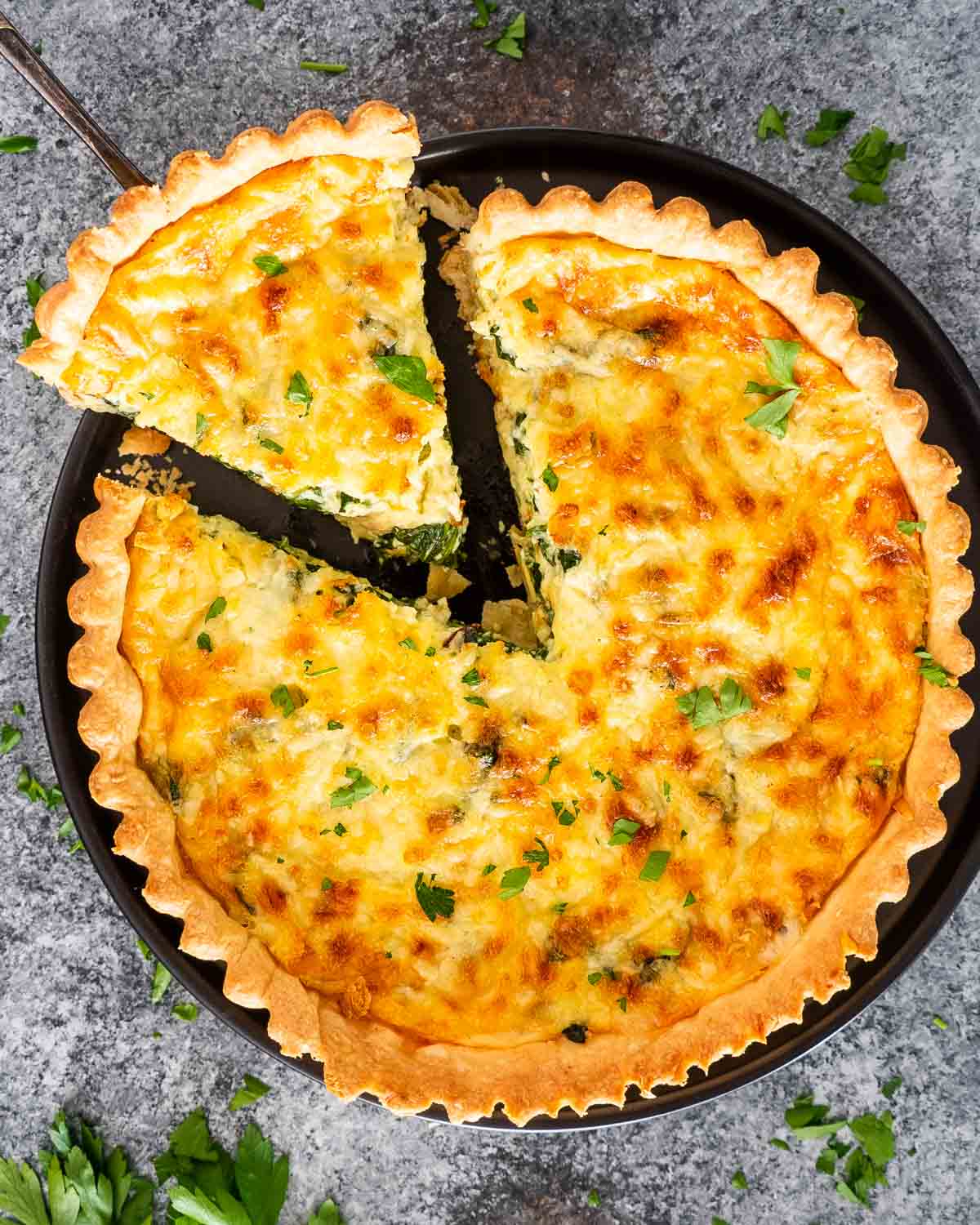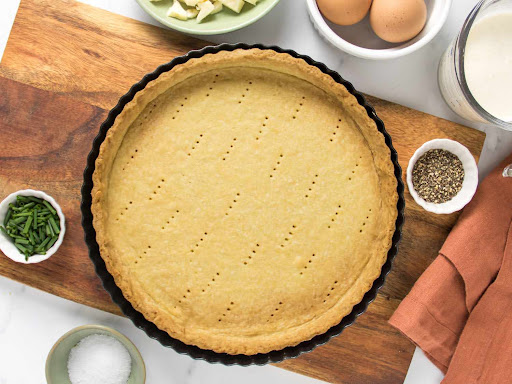Savory Tarts 101: What I Learned in Culinary School
Hello Chefs,
Today in culinary school, we ventured into the very delicious world of savory tarts—and let me tell you, they were absolutely out of this world. I’ve always thought of tarts as more of a sweet dessert thing, but today’s lesson totally expanded my definition. Savory tarts are elegant, versatile, and seriously satisfying.
We made three different savory tarts in class:
- Quiche Florentine — a creamy, custardy quiche filled with spinach and cheese.
- Tomato Gruyère Tart — fresh tomatoes layered with nutty Gruyère cheese and tucked into a flaky crust.
- Caramelized Onion and Goat Cheese Tart — sweet, jammy onions paired with tangy goat cheese for the ultimate flavor combo.
Every single one was beautiful to look at and to eat. But along the way, we also learned a ton of valuable tips and tricks that apply to both savory tarts specifically and tarts in general.

What Makes a Tart a Tart?
At its core, a tart is made up of:- A crust — usually a pâte brisée (shortcrust pastry), pâte sucrée (for sweet tarts), or sometimes puff pastry.
- A filling — which can be sweet or savory, custardy or firm, smooth or chunky.
- Baking technique — blind baking (baking the crust alone first) is often used to prevent a soggy bottom when adding wet fillings.
Savory tarts often feel more refined than a basic pie and are perfect for brunches, luncheons, or fancy appetizers.
Tips & Tricks for Tart Success
1. Blind Bake Your CrustThis was one of the biggest takeaways. For wet fillings like custards or juicy tomatoes, you want to blind bake your crust first.
- Chill your dough after rolling and shaping it into the tart pan.
- Line it with parchment paper and fill with pie weights or beans.
- Bake until just starting to set and turn lightly golden.
- Remove the weights, then bake a few minutes longer to fully set the base.
This keeps your tart bottom crisp and prevents the dreaded soggy crust.
2. Use the Right Dough
For savory tarts, we used pâte brisée, which is buttery, flaky, and not too sweet. The butter creates little layers that flake as they bake, while the cold dough ensures a tender, crisp crust. (Tip: always keep your butter cold when making the dough!)

3. Control the Moisture
Moisture is the enemy of a good tart.
- For quiches, wilt your spinach first so it doesn’t release water into your custard.
- For tomato tarts, slice and salt your tomatoes, letting them drain a bit before layering them into the crust to avoid a watery filling.
4. Custard Ratios Matter
When making quiche-style fillings, the classic ratio we used was roughly:
- 1 egg to 1/2 cup of dairy (milk, cream, or a combo).
This keeps the custard creamy but set, without being rubbery or runny.
5. Don’t Overfill
It’s tempting to load your tart with extra filling, but resist! Overfilling leads to spillovers and uneven cooking. Fill just below the edge of the crust for the best bake.
6. Rest and Cool Before Slicing
After baking, let your tart cool slightly before slicing to help everything set. Hot custard can be a little too soft straight out of the oven.
Why I Loved This Unit
Savory tarts are one of those dishes that feel fancy but are actually very approachable once you understand the basics. They’re endlessly customizable, beautiful on a plate, and seriously delicious. Plus, they work for breakfast, lunch, dinner, or as an appetizer—which might make them one of the most versatile things we’ve made so far.
Here are two recipes for this week:
Pie Dough (Pâte Brisée)
Spinach Quiche (Quiche Florentine)
Until next time, stay flaky and tart on!
 Brennah Van Wagoner
Brennah Van Wagoner
Weekly Newsletter Contributor since 2025
Email the author! brennah.oaks@gmail.com
